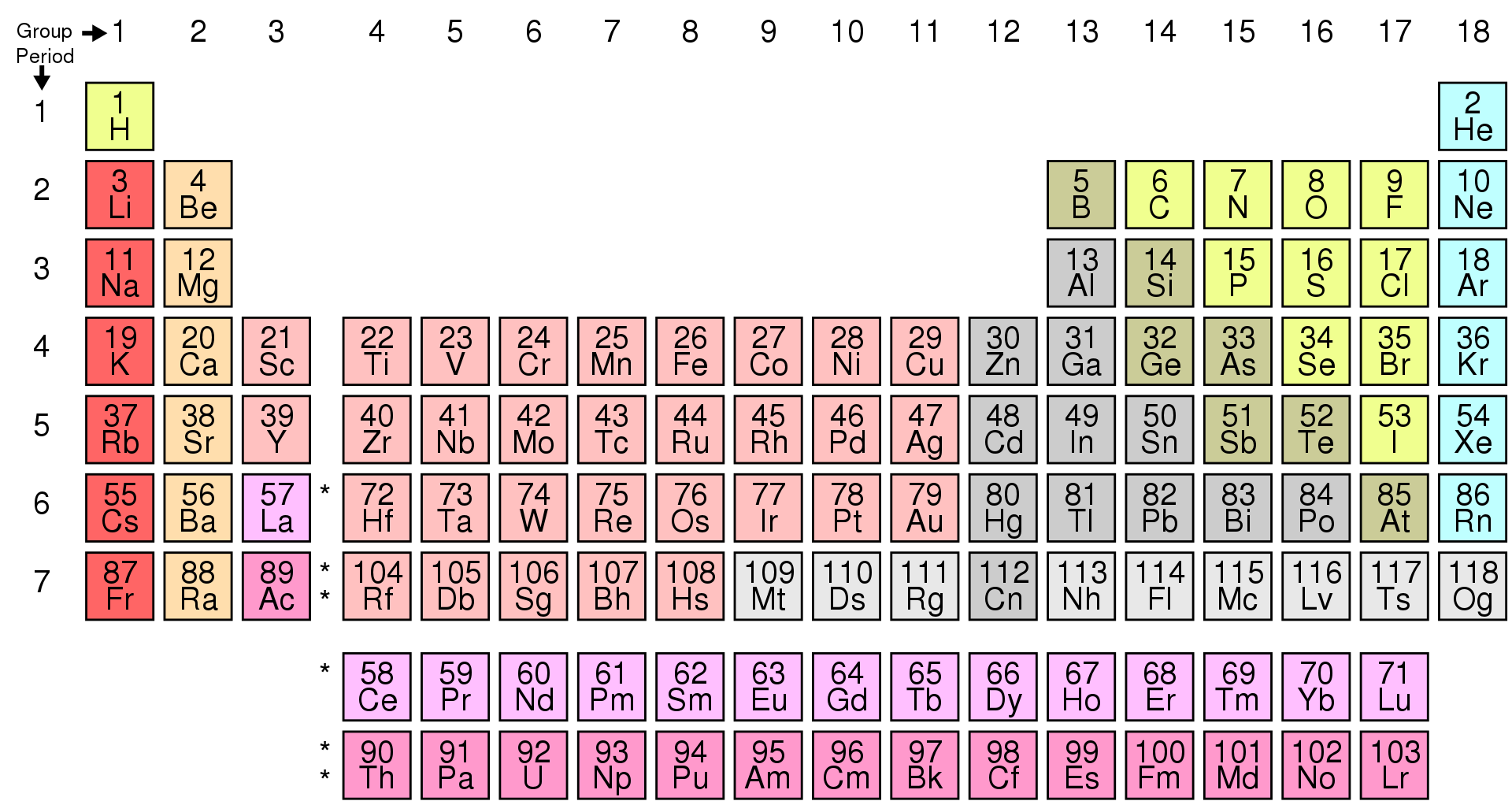 Periodicity | Periodic classification#
Periodicity | Periodic classification#
Periodic Classification#
- There are about 118 elements discovered by the scientists so far.
- Due to such a large number of elements, it is very difficult to study the properties of each element separately.
- Periodic classification is a method of grouping similar elements together and separating them from dissimilar elements.
- In this lesson, we will mainly focus on the modern periodic table.
Modern Periodic Table#
Image Credit: https://en.wikipedia.org/wiki/Periodic_table
- Modern periodic law, given by Henry Moseley, states that "The physical and chemical properties of the elements are periodic functions of their atomic numbers."
- Atomic number is defined as the nuclear charge or the number of protons or the number of electrons in neutral atoms.
- The horizontal rows in periodic table are called periods and the vertical columns are called groups.
- There are altogether seven periods. The period number corresponds to the highest principal quantum number (n) of the elements in the period. The first period contains 2 elements. The subsequent periods consists of 8, 8, 18, 18 and 32 elements, respectively.
- The seventh period is incomplete and theoretically, it will have a maximum of 32 elements.
- Elements having similar outer electronic configurations in their atoms are arranged in vertical columns, referred to as groups or families. There are 18 groups in total.
